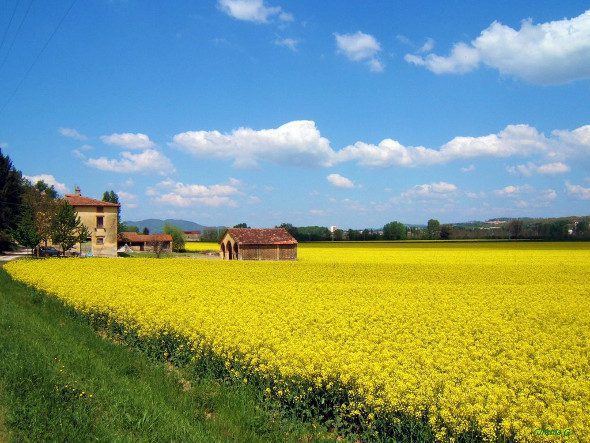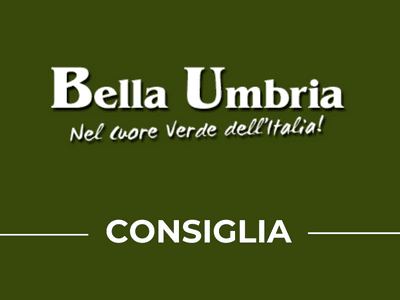▌ Alla scoperta di Umbertide
#BELLAUMBRIA
{“translation”:[{“lang”:”it”,”content”:”
Umbertide, seconda per importanza nella zona solo a Città di Castello, fu fondata intorno al X secolo per volontà di Uberto figlio del re d’Italia assumendo il nome di Fracta filiorum Umbertide.
>> Vuoi visitare Umbertide? Consulta ora le offerte dei migliori hotel nelle vicinanze
La storia del Medioevo la vede di volta in volta al fianco di Perugia o della Chiesa, soffrendo più volte sconfitte e devastazioni. Gli edifici più interessanti dal punto di vista artistico, oltre alla Rocca, oggi sede di mostre d’arte contemporanea, sono le Chiese di Santa Maria della Reggia e di Santa Croce. La prima è una costruzione a pianta ottagonale sormontata da una cupola del XVI secolo; la seconda, del 1651, ospita al suo interno una straordinaria tavola del Signorelli: “Deposizione dalla Croce”, oltre a numerose opere minori.

>> Ci sono offerte in scadenza per agriturismi nella zona di Umbertide! Clicca e consultale subito.
A poca distanza da S. Croce sono state costruite la Chiesa trecentesca di San Francesco, con facciata in conci e portale ad arco trilobo e la chiesa di S. Bernardino del ‘500. A cinque chilometri circa in direzione nord – est sorge quella che è una delle strutture difensive meglio conservate di tutta la valle tiberina: il Castello di Civitella Ranieri. Il maniero, eretto fra il XV e il XVI secolo, è costituito da quattro torri, due a pianta quadrata e due a pianta circolare, e domina ancora oggi tutta la piana circostante offrendo un validissimo punto di osservazione.
Credits: Montecorona, foto di Cinthia Gambuli
“},{“lang”:”en”,”content”:”
Umbertide, which, in the area, is second in importance only to Città di Castello, was founded at around the 10th century according to the wishes of Uberto son of the King of Italy, and took the name of “Fracta filiorum Uberti”.
>> Do you want to visit Umbertide? Check it out now of the best hotels in its vicinity
Its fate during the Middle Ages followed sometimes that of Perugia, in other times that of the Church, making it subject to defeats and devastations. The buildings of major artistic value are, apart from the Castle, where nowadays exhibitions of modern art are held, the Churches of St. Mary della Reggia and of the Holy Cross. The first is built in an octogonal form surmounted by a cupola dating back to the 16th century, the second, dating back to 1651, contains, among other minor works of art, an extraordinary painting by Signorelli: the “Deposition from the Cross“. Close by the Church of the Holy Cross, you’ll find the Churches of St. Francis (14th century) with its facade in conci and its portal with a three-lobed arch and the Church of St. Bernardino (16th century).
At about 5 km. to the North-East one of the best-preserved defensive structures of the whol tiber valley is to be found: the Castle of Civitella Ranieri. This building, constructed between the 15th and the 16th centuries, with its four towers, two square and two round, still dominates all of the surrounding plain, and offers a marvellous look-out point.
Credits: Montecorona, picture of Cinthia Gambuli
“},{“lang”:”es”,”content”:”Umbertide, which, in the area, is second in importance only to Città di Castello, was founded at around the 10th century according to the wishes of Uberto son of the King of Italy, and took the name of “Fracta filiorum Uberti”.
Its fate during the Middle Ages followed sometimes that of Perugia, in other times that of the Church, making it subject to defeats and devastations. The buildings of major artistic value are, apart from the Castle, where nowadays exhibitions of modern art are held, the Churches of St. Mary della Reggia and of the Holy Cross. The first is built in an octogonal form surmounted by a cupola dating back to the 16th century, the second, dating back to 1651, contains, among other minor works of art, an extraordinary painting by Signorelli: the “Deposition from the Cross. “Close by the Church of the Holy Cross, you’ll find the Churches of St. Francis (14th century) with its facade in conci and its portal with a three-lobed arch and the Church of St. Bernardino (16th century).
At about 5 km. to the North-East one of the best-preserved defensive structures of the whol tiber valley is to be found: the Castle of Civitella Ranieri. This building, constructed between the 15th and the 16th centuries, with its four towers, two square and two round, still dominates all of the surrounding plain, and offers a marvellous look-out point.
“},{“lang”:”fr”,”content”:”mbertide, deuxième en ordre d’importance dans la région après seulement Città di Castello, elle fût fondée aux alentours du Xème siècle sur le désir de Uberto fils du Roi d’Italie prenant le nom de “Fracta filiorum Uberti”.
L’histoire du Moyen-Âge la voit de temps en temps aux cotés de Pérouse ou de l’Eglise, souffrant plus d’une fois de violentes défaites et dévastations. Les bâtiments les plus intéressants d’un point de vue artistique, outre la forteresse, aujourd’hui siège d’expositions d’art contemporain, sont les églises de Ste. Marie de la Reggia et de Ste. Croix. La première est une construction à plan octogonal surmontée d’une coupole du XVIème siècle, la seconde, datant de 1651, accueille à l’intérieur un extraordinaire tableau de Signorelli: “Déposition de la Croix”, en plus de nombreuses autres ouvres mineures.
Près de Ste Croix ont été construite l’église du XIVème siècle de St. François, avec une belle façade et une porte à arc trilobé et l’église de St. Bernardino
du XVIème siècle.
A cinq kilomètres dans la direction du nord-est s’élève celle qui est l’une des structures défensives les mieux conservées de toute la vallée: le Château de Civitella Ranieri. Celle-ci, construite entre le Xvème et le XVIème siècles, avec quatre tours, deux carrées et deux circulaires, domine encore aujourd’hui toute la plaine environnante, offrant un excellent point d’observation.
“},{“lang”:”de”,”content”:”Umbertide, which, in the area, is second in importance only to Città di Castello, was founded at around the 10th century according to the wishes of Uberto son of the King of Italy, and took the name of “Fracta filiorum Uberti”.
Its fate during the Middle Ages followed sometimes that of Perugia, in other times that of the Church, making it subject to defeats and devastations. The buildings of major artistic value are, apart from the Castle, where nowadays exhibitions of modern art are held, the Churches of St. Mary della Reggia and of the Holy Cross. The first is built in an octogonal form surmounted by a cupola dating back to the 16th century, the second, dating back to 1651, contains, among other minor works of art, an extraordinary painting by Signorelli: the “Deposition from the Cross. “Close by the Church of the Holy Cross, you’ll find the Churches of St. Francis (14th century) with its facade in conci and its portal with a three-lobed arch and the Church of St. Bernardino (16th century).
At about 5 km. to the North-East one of the best-preserved defensive structures of the whol tiber valley is to be found: the Castle of Civitella Ranieri. This building, constructed between the 15th and the 16th centuries, with its four towers, two square and two round, still dominates all of the surrounding plain, and offers a marvellous look-out point.
“}]}





